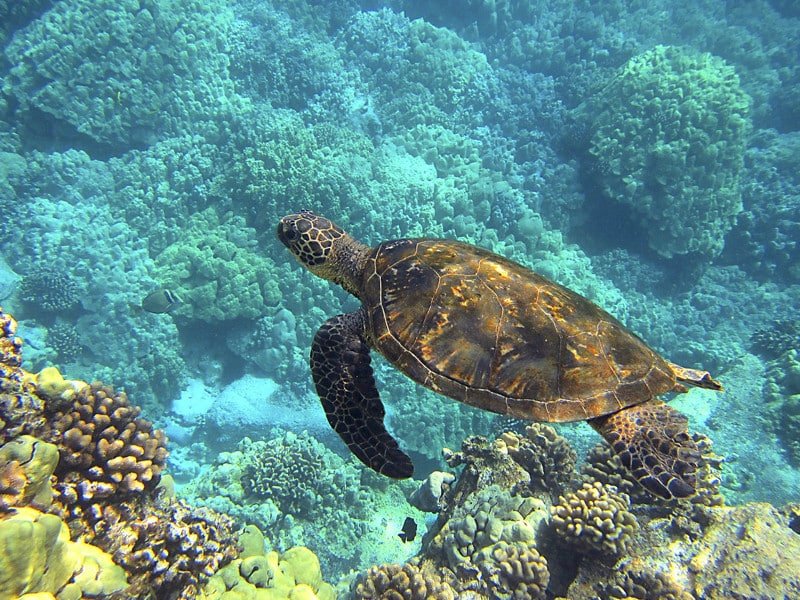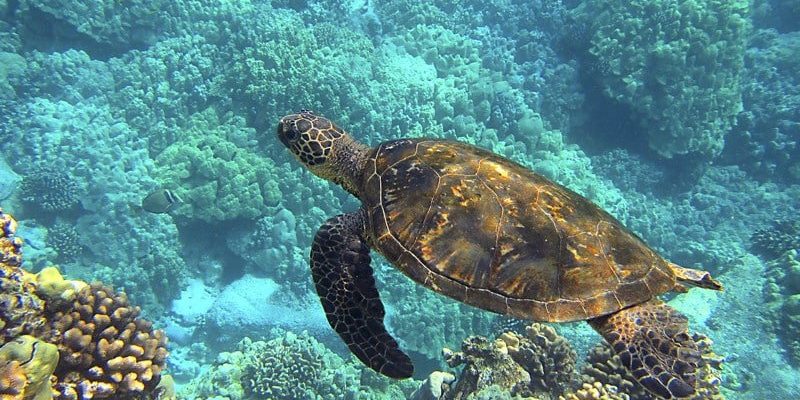
Imagine a busy city with different neighborhoods, each with its own vibe and character. Sea turtles are like the inhabitants of this city, moving between different habitats to find food, shelter, and breeding grounds. From beaches to coral reefs and even some brackish waters, sea turtles have adapted to thrive in various environments. Let’s dive deeper into their habitats and discover where you can find these amazing creatures.
Marine Habitats: The Open Ocean
Most sea turtles are found in the open ocean, where they roam vast expanses of water. This environment is rich in marine life, making it the perfect hunting ground for these reptiles. Think of the ocean as a giant buffet filled with all their favorite dishes, like jellyfish and seaweed.
Sea turtles, such as the loggerhead and green turtle, can travel thousands of miles across the sea. While they are often found in warmer waters, some species venture into cooler climates during specific times of the year. If you’re ever near the coast of Florida or Hawaii, keep your eyes peeled! These areas are hotspots for sea turtle sightings, thanks to their warm waters and abundant food sources.
Interestingly, sea turtles have a unique way of navigating these vast oceans. They can sense the Earth’s magnetic fields, which helps them find their way back to nesting sites. It’s like having a built-in GPS that guides them home, even from great distances!
Coastal Areas: Beaches and Lagoons
Coastal areas are crucial for the lifecycle of sea turtles, especially during nesting season. Female sea turtles return to the beaches where they were born to lay their eggs, creating a beautiful cycle of life. They prefer sandy beaches that are free from debris, as these areas provide safe spots for them to dig nests.
In regions like the Caribbean and Gulf of Mexico, you can see nesting activities from May through October. Here’s a quick snapshot of what happens during this magical time:
- Nighttime Nesting: Most turtles lay eggs at night to avoid predators.
- Egg Count: A single nest can hold between 100 to 200 eggs, depending on the species.
- Hatching: After about two months, hatchlings dig their way to the surface and make their dash for the ocean.
These coastal habitats are not only important for nesting but also for providing a nursery for young turtles. Shallow lagoons and estuaries offer abundant food and a safer environment, away from larger predators.
Coral Reefs: Underwater Cities
Coral reefs are another essential habitat for sea turtles. These vibrant ecosystems are often compared to underwater cities filled with life. They provide shelter and food for many marine species, including the beloved sea turtle. Species like the hawksbill turtle are particularly drawn to coral reefs, as they munch on sponges and other reef creatures.
Coral reefs are biodiverse and colorful, but they face many threats from climate change and pollution. When reefs degrade due to rising sea temperatures or ocean acidification, sea turtles lose their vital feeding grounds. Protecting these reefs is critical not only for turtles but for the entire marine ecosystem.
Sea turtles play a role in maintaining the health of coral reefs as well. When they graze on seagrass and algae, they help keep these ecosystems balanced, allowing for the growth of diverse marine life. It’s a beautiful relationship between the turtles and their habitats!
Estuaries and Brackish Waters
You might be surprised to learn that some sea turtles can also be found in estuaries and brackish waters, where salt and freshwater mix. These environments are rich in nutrients and can support various marine life. Although not common, sea turtles like the green turtle often venture into these areas to feed on seagrass and algae.
Estuaries serve as critical habitats for many juvenile turtles, offering a safer space while they grow. These areas are usually abundant with food, making them ideal for young turtles to thrive. However, they can also be vulnerable to human activities, such as pollution and habitat destruction. It’s essential to keep these ecosystems healthy for the survival of sea turtles and other wildlife.
Here’s the thing: protecting these habitats means supporting not just the turtles but also countless other species that depend on the same environments.
Migration Patterns: Traveling the Waters
Sea turtles are known for their incredible migration patterns, traveling long distances between feeding and nesting sites. Some species, like the leatherback turtle, can migrate over 10,000 miles in a single journey! This is more than just a leisurely swim; it’s a quest for survival.
They often travel across ocean currents, which help them save energy. Imagine riding a subway that takes you right to your destination without much effort—this is how sea turtles navigate the ocean. These migrations are deeply ingrained in their biology, allowing them to find food and reproduce effectively.
You might be wondering how exactly they make these long journeys. Sea turtles rely on various cues in their environment, like the position of the sun, moon, and even the Earth’s magnetic fields. This remarkable navigation ability is key to their survival.
Conservation Efforts: Protecting Their Homes
With the various habitats that sea turtles call home, it’s crucial to understand the threats they face. From coastal development to climate change, these habitats are under constant pressure. Conservation efforts are essential to protect both sea turtles and the ecosystems they rely on.
Organizations around the world are working hard to create marine protected areas, enforce nesting beach protections, and reduce plastic pollution in the ocean. One great example is the Turtle Excluder Device (TED), which helps catch shrimp without trapping sea turtles in fishing nets.
As individuals, we can also play a part in conservation. Participating in beach clean-ups, reducing plastic use, and supporting sustainable seafood choices can all contribute to healthier oceans. Honestly, every little bit helps!
Sea turtles are incredible creatures that inhabit a variety of environments, from the open ocean to beautiful beaches and vibrant coral reefs. Their unique migration patterns and life cycles remind us of the delicate balance between nature and survival. By understanding where sea turtles are found, we can appreciate their importance within our ecosystems and work together to ensure their survival.
Remember, protecting sea turtles means protecting the health of our oceans, which ultimately affects all of us. So next time you’re by the water, think about the amazing world beneath the surface and how we can all make a difference for these ancient mariners. Together, we can embrace our shared responsibility to preserve their habitats for future generations.

